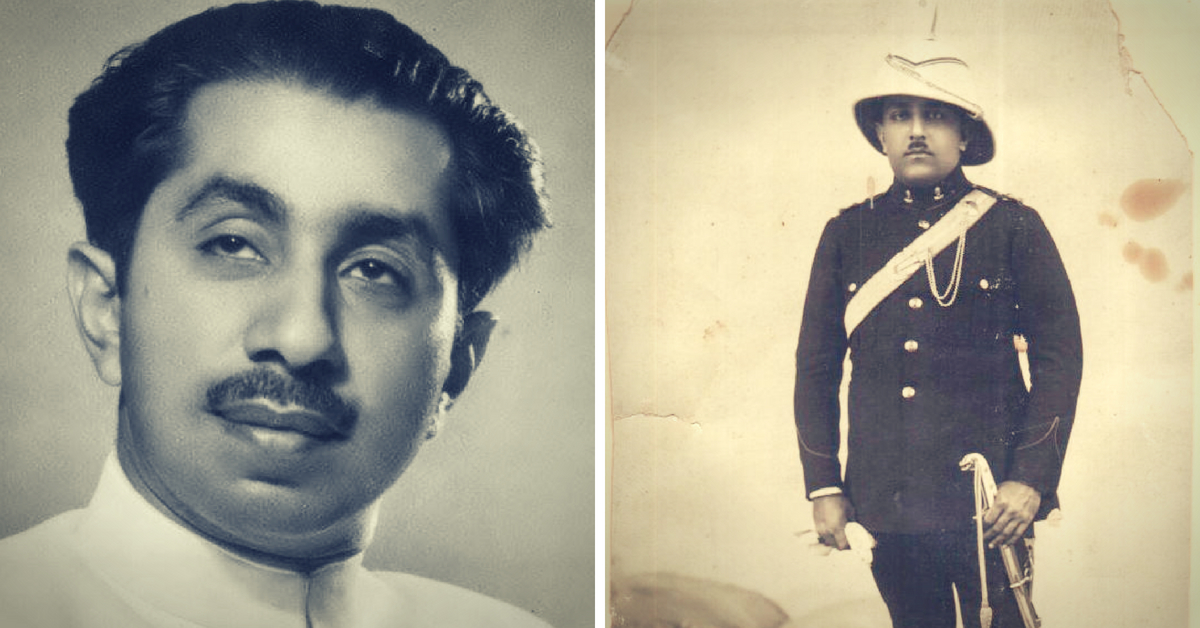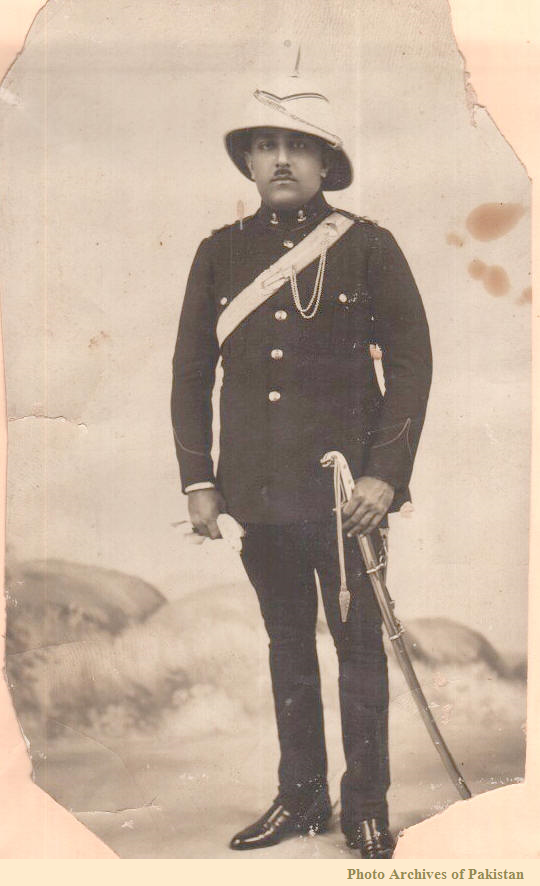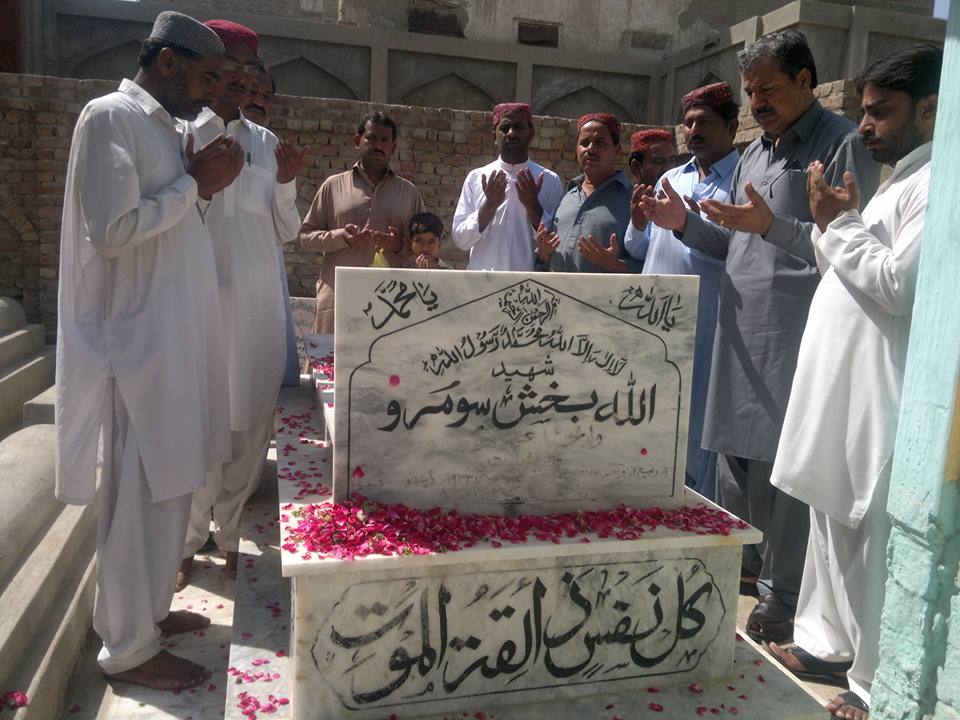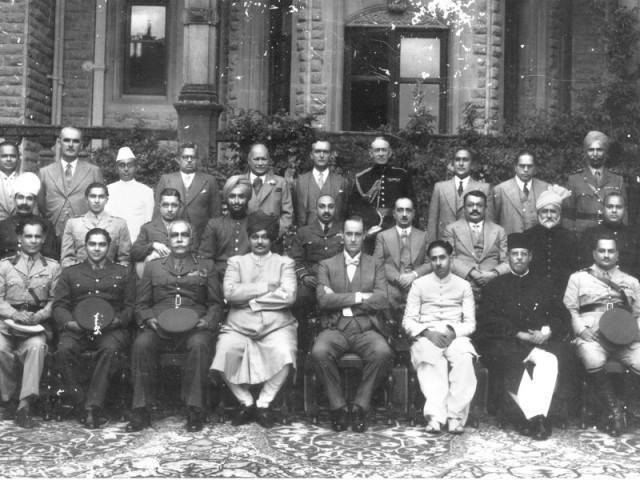Allah Bux Soomro: The Sindhi Premier Who Fought The British & The Two-Nation Theory!
Giving up his knighthood to support the Quit India Movement, he fought not just for India's freedom but also for its integrity! #ForgottenHeroes #IndianIndependence

To honour this nation’s Independence Day, we bring you the fascinating stories of #ForgottenHeroes of #IndianIndependence that were lost among the pages of history.
It’s impossible to discuss the Indian Independence movement without a reference to the Two-Nation Theory, propounded by the likes of Pakistan’s first premier Mohammad Ali Jinnah.
The call for a separate homeland for Muslims in the Indian subcontinent is an idea whose deleterious repercussions are felt even today, especially for members of the community who stayed back on the Indian side of the border with their patriotism regularly under the scanner.
However, there are figures from the community who rejected the Two-Nation Theory and fought valiantly for the cause of a united India against British imperialists. Khan Abdul Ghaffar Khan, Maulana Azad, and Allah Bux Soomro are some of those figures.
While we have learnt much about the first two, little is known about the latter freedom fighter and politician from the Sindh community.
“One of the biggest ‘what-ifs’ of mid-twentieth-century Sindhi history is to speculate on the course that politics in the province could have taken in the years immediately preceding Independence had Soomro not been murdered in May 1942. In contrast to many of his fellow Sindhi Muslim politicians – who gravitated to varying extents in the direction of the All-India Muslim League (AIML) – Soomro seemed resistant to its pull, leaning instead towards a pragmatic nationalism that saw him align himself with ‘Nationalist’ Muslim initiatives at the all-India level,” writes historian Sarah Ansari.
Born at the turn of the 20th century in Shikarpur in modern-day Pakistan’s Sindh province (then part of the erstwhile Bombay Presidency) into the influential Soomro Rajput community.
His family were large landowners and contractors, allowing Soomro to grow up in affluence. Following his matriculation in 1918, he joined his father’s contractor business, and subsequently entered politics.
Thanks to his family’s political connections, allied with his education in the British system, he rose quickly within the province’s political circles – presenting a moderate face. Many remember him as an honest, unassuming and upright politician, who cared deeply about his province. Even today, his descendants are influential political players in Pakistan, particularly in the Sindh province.
For example, during train journeys, he would always occupy the upper berth, leaving the lower and more convenient berth for others, write historians PV Tahilramani and KR Malkani, in their book ‘The Sindh Story’.
In fact, one time, when a flood threatened to overwhelm Shikarpur, he decided to divert the raging waters onto his own land to protect the homes of others.

In 1926, he defeated an influential landlord for the Upper Sindh seat in the erstwhile Bombay Legislative Council. It’s a seat he held onto for the next 10 years. Thanks to his efforts, the region saw the construction of the Sukkur Barrage project, which The Express Tribune argues was “responsible for revolutionising agriculture in Sindh”. It stands even today.
His work in the province, and his moderation in the face of a boiling Independence movement, meant he was not only bestowed with the title of ‘Khan Bahadur’ but also was awarded a knighthood.
Following the introduction of provincial autonomy through the Government of India Act, 1935, he formed the Itehad (unity) Party alongside Shahnawaz Bhutto and Abdullah Haroon. In local provincial elections, it won 24 out of the 35 Muslim seats in a house of 60.
His popularity posed a major threat to the divisive Muslim League, and he came into his own in the freedom struggle when he served as chief minister of Sindh for two terms (March 1938-April 1940, and March 1941-October 1942), and the subsequent Quit India Movement.
Where the Muslim League had spread its popularity in other parts of modern-day Pakistan, Soomro ensured that Sindh remained away from their sphere influence until his untimely death.
As an influential political figure who rejected the Muslim League Two-Nation Theory, Soomro was also a major proponent of secularism. During his tenure as chief minister of Sindh, he famously dealt with the Masjid Manzilgah controversy, which threatened to break into a major communal riot.
Located on the banks of the Indus, the Masjid Manzilgah were two domed structures which the British had taken over after their conquest of Sindh. The Muslim community claimed the structures as their own mosque, and there were mass agitations against the British to return them.
“The twist in the story was that Hindus were against this demand since the buildings were situated directly opposite the river island of Sadh Belo. The temples at Sadh Belo were a favourite site of pilgrimage for the local Hindus. This situation gave the Muslim League their first chance at spearheading a mass movement in a Muslim-majority province. All the elements of a potential communal riot were present – two agitated religious communities claiming a historic right to the use of the land earmarked as holy by both communities,” writes Shehzad Gias for The Express Tribune.
When he took over as Sindh chief minister, Soomro directed a commission to look into the claims of the Muslim community, which reported that Manzilgah was an inn. Challenging the administration, the local Muslim leadership forcibly occupied it from October 3, 1939, to November 19, 1939.

With government force failing to achieve any real objective, a compromise was reached allowing Muslim to pray there. But the Hindu Mahasabha threatened mass retaliation if the government did take back Manzilgah. The ensuing riots resulted in the deaths of more than 60 people.
Finally, out of office after his first tenure in February 1941, Soomro facilitated a compromise whereby the Muslim community retained control of Manzilgah, but not before they had agreed not to prevent the playing of music in the Saadha Belo temple.
During his tenure as chief minister, he also took the decision to allow revolutionary freedom fighter Ubaidullah Sindhi to return from his exile, despite opposition from the British. In addition, he also reduced the salary of ministers in his cabinet.
However, his growing popularity in the Sindhi province, which boasts of a remarkable syncretism, left him unpopular with both the Muslim League and the Indian National Congress. Such was their distaste that they collaborated in a no-confidence motion to overthrow his government.
After his government’s dismissal, he was inducted into the British Empire’s National Defence Council—a post he gave up with the start of the Quit India Movement. In fact, he briefly served as chief minister for the second time, but his support for the Independence movement made matters untenable for the colonialists and his government was soon dismissed.

In September 1942 he gave up his knighthood, the title of Khan Bahadur, conferred on him by the British Raj and membership of the National Defence Council. In a letter to the Viceroy dated September 19, Soomro writes:
“Convinced as I am, that India has every right to be free and that the people of India should have conditions in which they could live in peace and harmony, the declaration and actions of the British Government have made it clear that instead of giving their cooperation to the various Indian parties and communities in settling their difference and parting with power to the people of the land allowing them to live happily in freedom and mould the destinies of their country according to their birth right, the policy of the British Government has been to continue their imperialistic hold on Indian and to persist in keeping her under subjection, to the use the political and communal difference for propaganda purposes, and to crush the national forces to serve their own imperialistic aims and intentions….I feel I cannot retain the honours I hold from the British Government, which in the circumstance that have arises I cannot but regard as token of British imperialism.”
With both Mahatma Gandhi and Jawaharlal Nehru in prison at the time, Soomro’s act was viewed as a major act of defiance against the British, who once saw him as one of their own.
In fact, Subhash Chandra Bose praised his actions on the radio. Moreover, at the time, Soomro had started his own newspaper called The Azad, which angered the British for its “extreme” views in support of freedom. He had little choice but to quit the National Defence Council.

Six months after his act of defiance, however, he was murdered in broad daylight by religious extremists in his hometown of Shikarpur, while travelling on a tonga. Although his assailants were tried and sentenced, no one knew why he was murdered. However, his death did turn the tide of politics in the Sindh province into one between those for and against the Muslim League.
Also Read: This Rebel King From Kerala The Brits Revered!
Soomro’s vision for a unified India, where both Hindus and Muslims could live in peaceful co-existence and share in its unique heritage, blew up soon after his death with the advent of a bloody Partition. Mobilising many among in the Muslim community for a unified version of India, Soomro seemingly paid for his vision of a united India with his life.
It’s time we remember his contributions.
(Edited by Vinayak Hegde)
Like this story? Or have something to share? Write to us: [email protected], or connect with us on Facebook and Twitter.
NEW: Click here to get positive news on WhatsApp!
If you found our stories insightful, informative, or even just enjoyable, we invite you to consider making a voluntary payment to support the work we do at The Better India. Your contribution helps us continue producing quality content that educates, inspires, and drives positive change.
Choose one of the payment options below for your contribution-
By paying for the stories you value, you directly contribute to sustaining our efforts focused on making a difference in the world. Together, let’s ensure that impactful stories continue to be told and shared, enriching lives and communities alike.
Thank you for your support. Here are some frequently asked questions you might find helpful to know why you are contributing?


This story made me
-
97
-
121
-
89
-
167











